Hummingbirds Love Penstemon Flowers (Beardtongue)
Updated: Feb. 12, 2024
The flowering spikes of penstemon, also known as beardtongue, transform the garden in spring and summer and attract hummingbirds.
On This Page
Penstemon Care and Growing Tips
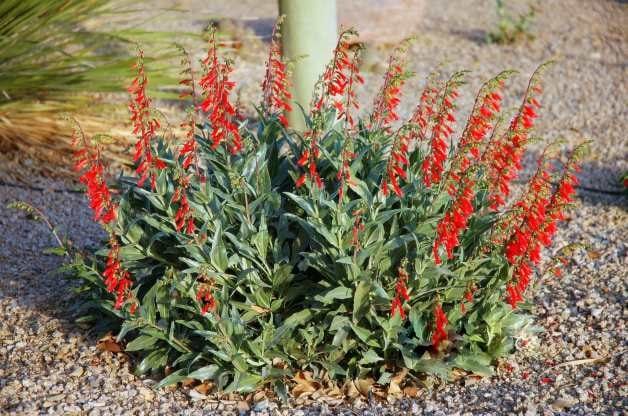
- Common name: Beardtongue
- Scientific name: Penstemon spp.
- Zones: 3 to 8 or 9, depending on variety
- Light needs: Full sun or filtered shade
- Soil: Well-draining
Native to North America, penstemon, commonly known as beardtongue, can thrive in many locations. With over 200 varieties available, there are many options for almost any garden.
Penstemon are versatile perennial plants, looking equally at home when planted in groups of three or five as in an informal garden design. They’re a great choice to use as edging plants in your borders.
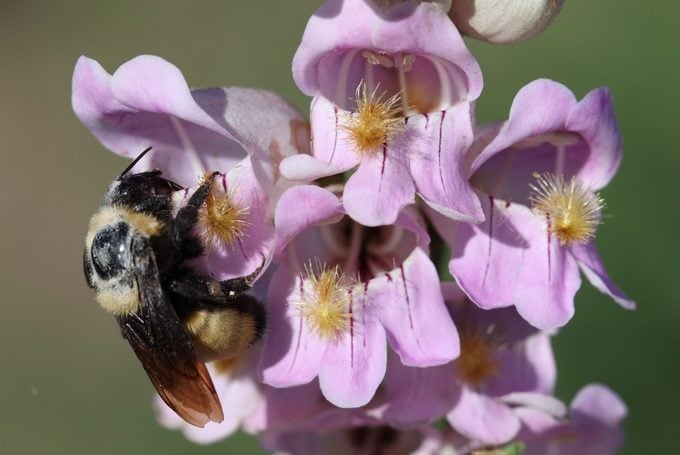
These low-maintenance perennials put on a great show. The majority are tough and drought-tolerant once established, and they shrug at neglect. Give them plenty of sun to ensure strong growth. These flowering plants do best in gardens with well-draining soil and some supplemental water during the warmest months of the year. Fertilizer isn’t needed. Rich, fertile soil will actually decrease flowering, and the plants won’t tolerate clay soil or wet feet in winter.
They begin flowering in late winter in areas with mild temperatures, and the blooms last through spring. In cooler regions, these water-wise plants flower later in the season and continue to bloom through summer. Their height increases dramatically when in flower, from 1 to 2 feet, up to 4 feet, depending on the species. Once the blooms fade, remove the flowering spikes.
Penstemon Varieties
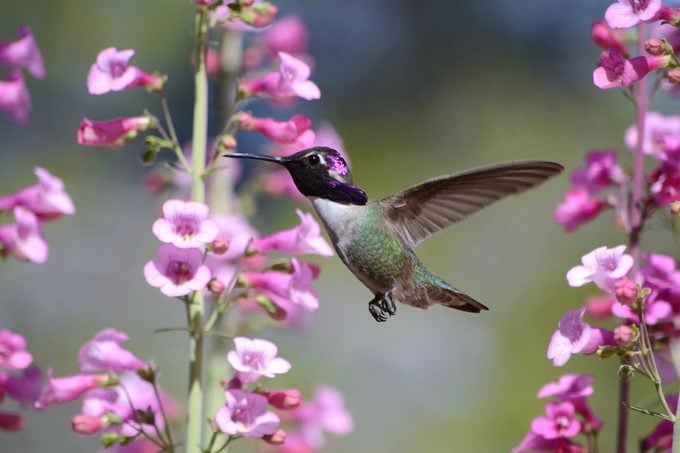
Penstemon is a valuable addition to the drought-tolerant garden. Its tall flowering spikes paint the landscape in spring and summer. Each spike consists of multiple blossoms ranging in color, from white, pink, magenta, orange, purple and to red, depending on the variety.
Some types, such as Parry’s, do well in wildflower gardens because they are easy to start from seed. When planted among lupine, the blend of purple and pink adds a cooling touch.
I grow firecracker (Penstemon eatonii) and Parry’s (Penstemon parryi) in my desert Southwest garden. These plants are a magnet for Anna’s and Costa’s hummingbirds.
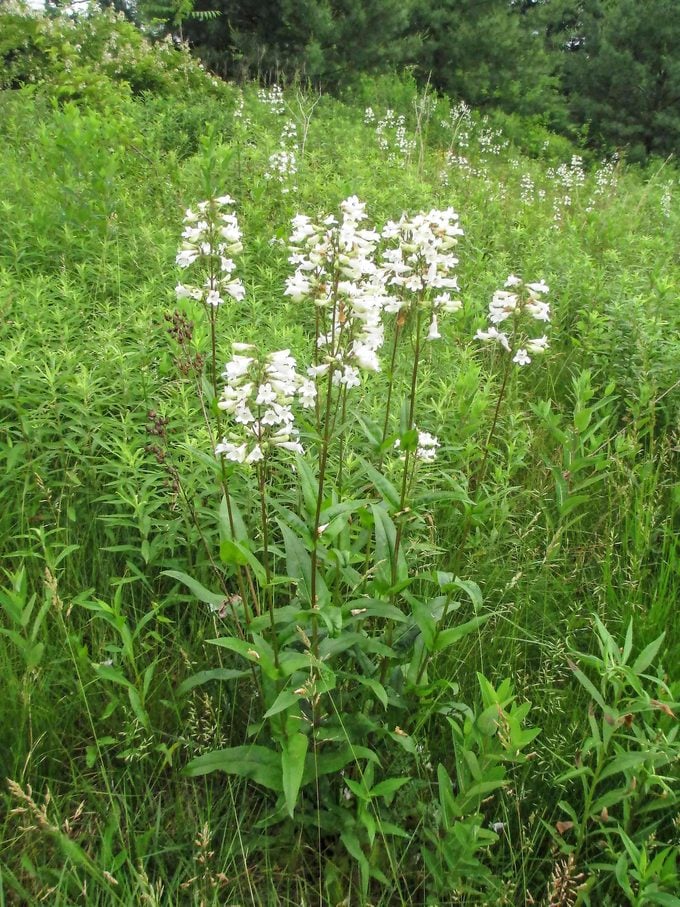
“I saw this plant last spring during my walks near a pond. It was in a field with other wildflowers. I can’t identify it. Any ideas?” asks Birds & Blooms reader Mary Ahearn of Pottstown, Pennsylvania.
Horticultural expert Melinda Myers says, “This tall stately plant is a Penstemon digitalis, also known as foxglove beardtongue. This North American native perennial is hardy in zones 3 to 8. It prefers full sun and will tolerate dry soil once established. The white flowers appear in spring through early summer and will attract butterflies to the garden. The birds enjoy the seeds and the deer tend to leave this plant alone. You may find several popular cultivars of this plant at your local garden center.”
Grow Penstemon for Hummingbirds and Bees
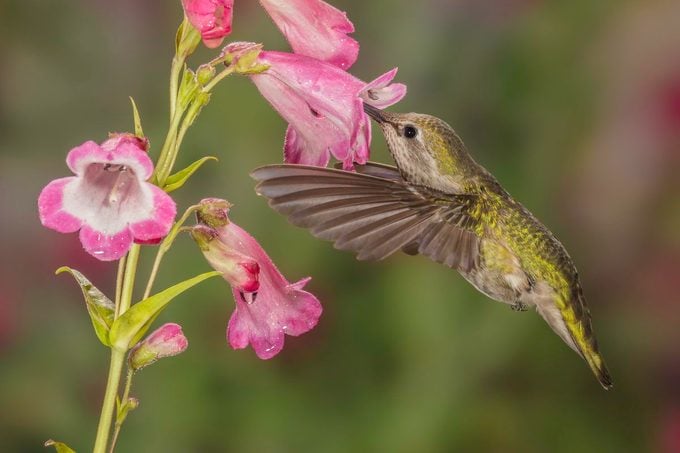
Besides adding beauty to your backyard, hummingbirds are drawn to penstemon’s nectar-filled tubular flowers, which makes it a must-have plant for every hummingbird garden.
Wherever you plant penstemon, be sure it’s near a window or your favorite sitting area. That way, you can see your visiting hummingbirds up close.
Discover the top 15 colorful hummingbird flowers to grow.
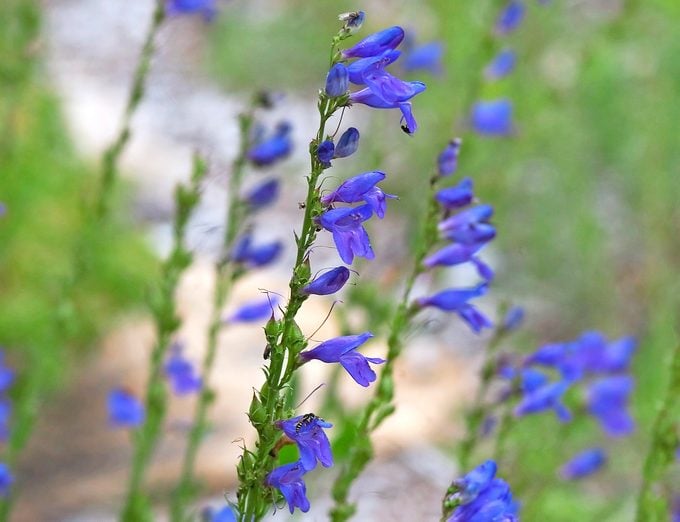
Hummingbirds aren’t the only pollinators that this plant attracts. Some types, like Rocky Mountain (Penstemon strictus), attract bumblebees as well. The bumblebees crawl right into the blossoms to drink nectar or fall asleep, leaving their back ends poking out. This easy-to-grow Mountain West native plant thrives in sun to part shade and dry soil.
Pineleaf (Penstemon pinifolius) features evergreen foliage that resembles pine needles and tubular flowers. It is deer-resistant, so there’s no need to worry about the plant getting eaten. Plant it on slopes or in rock gardens.
Both of these varieties are native to the Rocky Mountains; it’s best to choose penstemon varieties that are native to your area and suited to your growing conditions. Consult with your local extension office, garden center or a native plant expert.
About the Expert
Melinda Myers is the official gardening expert for Birds & Blooms. A TV/radio host, author and columnist, Melinda Myers has written more than 20 gardening books.
Sources
Why Trust Us
For nearly 30 years, Birds & Blooms, a Trusted Media Brand, has been inspiring readers to have a lifelong love of birding, gardening and nature. We are the #1 bird and garden magazine in North America and a trusted online resource for over 15 million outdoor enthusiasts annually. Our library of thousands of informative articles and how-tos has been written by trusted journalists and fact-checked by bird and garden experts for accuracy. In addition to our staff of experienced gardeners and bird-watchers, we hire individuals who have years of education and hands-on experience with birding, bird feeding, gardening, butterflies, bugs and more. Learn more about Birds & Blooms, our field editor program, and our submission guidelines.